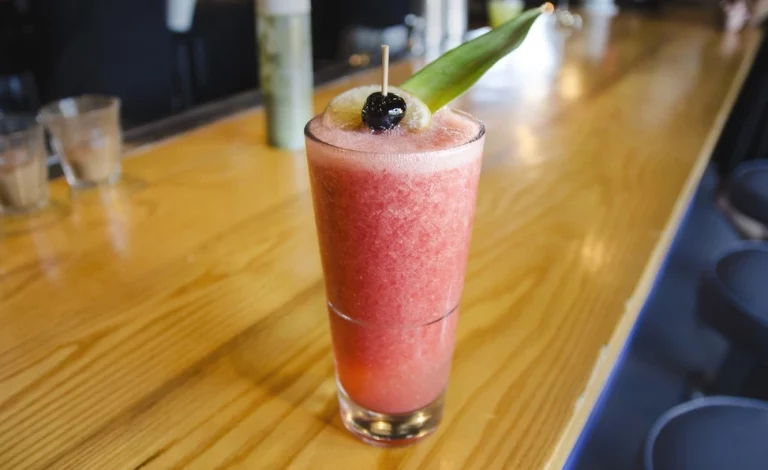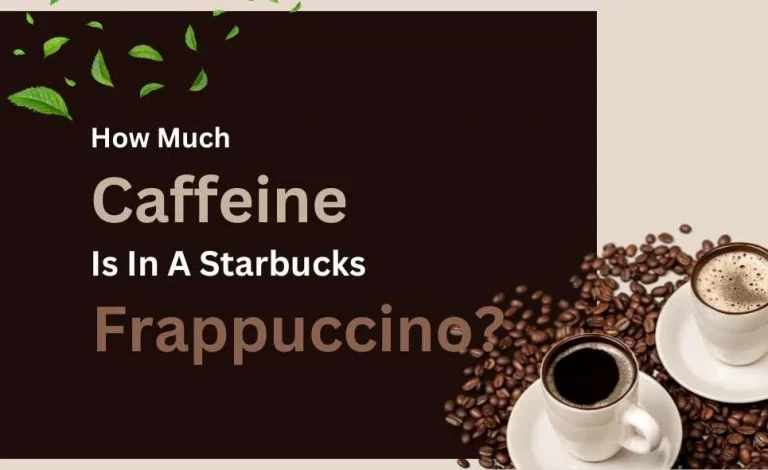how much caffeine in Starbucks coffee?

Understanding the caffeine content in Starbucks coffee is crucial for coffee enthusiasts and casual drinkers alike. Starbucks, a global coffee powerhouse, offers a wide range of beverages with varying levels of caffeine. This article aims to provide clarity on the caffeine content in different Starbucks coffees, a topic of interest for many who rely on their daily coffee fix. Whether you’re a Starbucks partner hours or a customer curious about your favorite drink, this guide will help you navigate the world of caffeine at Starbucks. Knowing the caffeine content can enhance your coffee experience, ensuring you get just the right amount of buzz.
Introduction to Starbucks Coffee and Caffeine
Starbucks has become synonymous with coffee culture around the world. From its humble beginnings in Seattle, it has grown into a global phenomenon, offering a vast array of coffee drinks. Each beverage comes with its unique caffeine content, catering to the diverse needs and preferences of its customers. Whether you’re checking your Starbucks gift card balance for a morning espresso or choosing an afternoon pick-me-up, understanding the caffeine content is key to making the best choice for your lifestyle.
The Role of Caffeine in Coffee
Caffeine is a natural stimulant found in coffee beans, and it plays a significant role in the popularity of coffee. It’s known for enhancing alertness and providing an energy boost, making coffee a favorite morning beverage for many. In Starbucks coffee, the caffeine content varies, allowing customers to choose their preferred level of stimulation based on their personal needs and sensitivities.
Starbucks Coffee: A Global Favorite
Starbucks coffee has gained immense popularity across the globe for its quality and variety. It’s not just about the coffee; it’s about the experience – from the ambiance of its stores to the personalized service. For many, a visit to Starbucks is an essential part of their routine, often aligning with My Partner Hours – a time to relax, refuel, and enjoy a carefully crafted cup of coffee. Starbucks has mastered the art of combining quality coffee with an enjoyable customer experience, making it a beloved part of many people’s daily lives.
Caffeine Content in Popular Starbucks Brews
Starbucks offers a diverse range of coffee brews, each with a unique caffeine content that caters to various preferences. Understanding the caffeine content in these popular brews can help customers make informed choices based on their caffeine needs. From the bold espresso shots to the more mellow brewed coffees, Starbucks has something for everyone. This section will break down the caffeine content in some of the most popular Starbucks espresso-based drinks and brewed coffee varieties.
Espresso-Based Drinks
Espresso-based drinks are a staple at Starbucks, known for their rich flavor and higher caffeine concentration. These drinks are made from concentrated shots of espresso, which form the base for a variety of coffee beverages. The caffeine content in these drinks varies depending on the number of espresso shots used and the size of the drink.
Espresso Shot
- A single espresso shot at Starbucks contains about 75 mg of caffeine.
- This forms the base for many of Starbucks’ most popular coffee drinks.
- Espresso shots can be enjoyed on their own or added to other drinks for an extra caffeine boost.
- A double shot, commonly used in larger drinks, contains about 150 mg of caffeine.
- The caffeine in Starbucks espresso is known for its rich and deep flavor profile.
Cappuccino
- A typical Starbucks cappuccino contains one shot of espresso in a Tall size, amounting to 75 mg of caffeine.
- Cappuccinos are a blend of espresso, steamed milk, and a layer of foam on top.
- The balance of milk and espresso makes cappuccinos a popular choice for those who enjoy a creamy but strong coffee.
- In larger sizes, the caffeine content increases with the addition of more espresso shots.
- A Grande cappuccino, with two shots of espresso, contains approximately 150 mg of caffeine.
Latte
- Starbucks lattes start with one espresso shot in a Tall size, providing 75 mg of caffeine.
- Lattes are made with a larger proportion of steamed milk compared to cappuccinos, resulting in a milder flavor.
- This drink is ideal for those who prefer a less intense coffee experience but still enjoy the taste of espresso.
- In a Grande latte, with two shots of espresso, the caffeine content is around 150 mg.
- Customizations like flavored syrups can be added to lattes without affecting the caffeine content.
Caffeine in Starbucks Coffee
Now, let’s get to the main question at hand: how much caffeine is in Starbucks coffee? The caffeine content in Starbucks coffee varies depending on the type of drink and the size. Here are some examples:
- A 12-ounce (tall) brewed coffee contains 260 mg of caffeine.
- A 16-ounce (grande) brewed coffee contains 330 mg of caffeine.
- A 20-ounce (venti) brewed coffee contains 415 mg of caffeine.
- A 12-ounce (tall) latte contains 75 mg of caffeine.
- A 16-ounce (grande) latte contains 150 mg of caffeine.
- A 20-ounce (venti) latte contains 225 mg of caffeine.
- A 12-ounce (tall) cappuccino contains 75 mg of caffeine.
- A 16-ounce (grande) cappuccino contains 150 mg of caffeine.
- A 20-ounce (venti) cappuccino contains 225 mg of caffeine.
- A 12-ounce (tall) cold brew contains 155 mg of caffeine.
- A 16-ounce (grande) cold brew contains 205 mg of caffeine.
- A 20-ounce (venti) cold brew contains 310 mg of caffeine.
- A 12-ounce (tall) iced coffee contains 120 mg of caffeine.
- A 16-ounce (grande) iced coffee contains 165 mg of caffeine.
- A 20-ounce (venti) iced coffee contains 235 mg of caffeine.
- A 12-ounce (tall) Frappuccino contains 70 mg of caffeine.
- A 16-ounce (grande) Frappuccino contains 110 mg of caffeine.
- A 20-ounce (venti) Frappuccino contains 150 mg of caffeine.

Brewed Coffee Varieties
Starbucks’ brewed coffee varieties offer a range of flavors and caffeine contents, catering to different preferences. These coffees are brewed from ground beans and are typically served black, with the option to add milk and sweeteners. The caffeine content in these coffees varies depending on the roast and the size of the beverage.
Pike Place Roast
- Pike Place Roast is a medium-roasted coffee, offering a smooth and balanced flavor.
- A Tall (12 oz) cup of Pike Place Roast contains about 235 mg of caffeine.
- This roast is a great option for those who prefer a milder coffee flavor without sacrificing caffeine.
- Pike Place Roast is named after Starbucks’ original location in Seattle’s Pike Place Market.
- It’s one of the most popular brewed coffee options at Starbucks due to its approachable taste and moderate caffeine level.
Blonde Roast
- The Blonde Roast is a lightly roasted coffee, known for its sweet and mellow flavor.
- Despite its lighter roast, a Tall (12 oz) cup contains about 270 mg of caffeine, making it one of the higher caffeine options at Starbucks.
- This roast appeals to those who prefer a lighter flavor but still need a substantial caffeine kick.
- The Blonde Roast is a good choice for morning coffee, offering a gentle taste with a strong caffeine boost.
- Its higher caffeine content is due to the shorter roasting process, which retains more caffeine in the beans.
Dark Roast
- Starbucks’ Dark Roast coffees are known for their rich and bold flavors.
- A Tall (12 oz) Dark Roast coffee contains about 195 mg of caffeine.
- These roasts are perfect for those who love a strong, robust coffee flavor.
- The caffeine content is slightly lower in dark roasts compared to lighter roasts due to the longer roasting process.
- Dark Roast coffees are ideal for those who enjoy a hearty, full-bodied coffee experience with a moderate caffeine level.
Read Related Posts:
Comparing Caffeine in Starbucks Coffee with Other Brands
When it comes to caffeine content, Starbucks coffee often stands out from other brands. Known for its robust and flavorful blends, Starbucks tends to offer higher caffeine levels compared to many other coffee chains. This comparison is crucial for coffee lovers who are particular about their caffeine intake. Understanding these differences can help customers make informed decisions when choosing their coffee source.
Starbucks vs. Other Coffee Chains
Generally, Starbucks coffee has a higher caffeine concentration than many other coffee chains. This is due to Starbucks’ unique roasting process and coffee bean selection. Customers often find that a cup of Starbucks provides a stronger caffeine kick than a similar-sized beverage from other coffee shops. This difference is a significant factor in why many prefer Starbucks for their morning start or afternoon boost.
Starbucks vs. Home-Brewed Coffee
Compared to home-brewed coffee, Starbucks coffee usually contains more caffeine per cup. The precise brewing techniques and specific coffee blends used at Starbucks contribute to this higher caffeine content. For those who brew coffee at home, achieving the same caffeine level as a Starbucks drink would require a different ratio of coffee to water.
Decaf Options at Starbucks
Starbucks recognizes that not everyone desires a high caffeine content in their coffee, which is why they offer several decaffeinated options. These decaf beverages provide the rich taste of coffee without the high caffeine levels. Understanding the decaffeination process and the residual caffeine content in these drinks is important for those monitoring their caffeine intake.
Understanding Decaf Coffee
Decaf coffee at Starbucks is made from beans that have undergone a decaffeination process. This process removes a significant amount of caffeine while retaining the coffee’s flavor and aroma. While decaf coffee is not entirely caffeine-free, it contains much lower levels of caffeine compared to regular coffee.
Caffeine Content in Starbucks Decaf Coffee
The caffeine content in Starbucks decaf coffee is minimal, making it a suitable option for those looking to reduce their caffeine consumption. While it’s not completely caffeine-free, the amount present in decaf coffee is typically negligible for most people. This makes Starbucks decaf options a great choice for evening consumption or for those with caffeine sensitivities.
How Starbucks Customizes Caffeine Content
Starbucks offers various ways to customize the caffeine content in your coffee, catering to individual preferences and needs. Whether you’re looking for a strong caffeine boost or a milder experience, Starbucks baristas can adjust your drink accordingly. This customization is one of the reasons Starbucks remains a popular choice among coffee drinkers.
Customizing Espresso Shots
One of the simplest ways to customize caffeine content at Starbucks is by adjusting the number of espresso shots in your drink. Adding an extra shot can increase the caffeine level for a stronger effect, while reducing the number of shots lowers the caffeine content. This customization allows customers to tailor their drinks to their desired caffeine intake.
Adjusting Brew Strength
Customers can also request adjustments to the brew strength of their coffee. This involves altering the coffee-to-water ratio during the brewing process. A stronger brew results in higher caffeine content, while a weaker brew has less caffeine. This option is perfect for those who prefer a specific caffeine level but don’t want to alter the flavor profile of their coffee.
The Health Perspective on Caffeine Consumption
Caffeine consumption is a health consideration for many coffee drinkers. While caffeine has several benefits, it’s important to consume it in moderation. Understanding the health implications of caffeine can help customers enjoy their Starbucks coffee responsibly.
Benefits of Caffeine
Caffeine has been shown to improve mental alertness and concentration. It can also enhance physical performance and endurance. For many, a cup of Starbucks coffee is not just a beverage but a source of increased productivity and energy.
Risks of Excessive Caffeine Intake
However, excessive caffeine intake can lead to negative side effects like insomnia, nervousness, and increased heart rate. It’s important to be aware of your caffeine tolerance and consume coffee within your personal limits. Starbucks offers a range of caffeine levels to cater to different sensitivities and preferences.
How to Choose the Right Coffee for Your Caffeine Needs
Choosing the right Starbucks coffee for your caffeine needs involves understanding your personal caffeine sensitivity and preferences. Whether you need a strong cup to kickstart your day or a mild brew for a gentle lift, Starbucks has options for everyone. Tailoring your choice to your caffeine needs can enhance your coffee experience.
Evaluating Your Caffeine Sensitivity
Understanding your caffeine sensitivity is key to choosing the right Starbucks coffee. If you are sensitive to caffeine, opting for lower-caffeine options or decaf coffee might be preferable. For those who tolerate caffeine well, stronger brews or extra shots might be more suitable.
Matching Coffee Choices with Caffeine Preferences
Starbucks offers a variety of coffee types and strengths, allowing customers to match their choices with their caffeine preferences. From lightly roasted blends with lower caffeine levels to dark, robust brews with more caffeine, Starbucks caters to a wide range of tastes and caffeine needs.
Understanding Starbucks Coffee Sizes and Caffeine
The size of your Starbucks coffee can also affect the caffeine content. Larger sizes generally contain more caffeine, although this can vary depending on the type of coffee. Understanding how caffeine content varies with size can help you choose the appropriate drink for your caffeine needs.
Caffeine Content by Cup Size
Starbucks offers different cup sizes, and each size has a different caffeine content. Typically, a larger size means more caffeine, but this can also depend on the type of coffee and the number of espresso shots. It’s helpful to know the caffeine content for each size to make an informed decision.
Recommendations for Different Times of the Day
For a morning caffeine boost, a larger size or a stronger coffee might be preferable. In the afternoon or evening, smaller sizes or decaf options might be more suitable to avoid disrupting sleep patterns. Starbucks offers a range of sizes and options to cater to different times of the day.
Caffeine in Starbucks Seasonal and Limited-Edition Coffees
Starbucks is known for its seasonal and limited-edition coffees, which often come with unique flavors and caffeine levels. These special brews offer a way to enjoy the changing seasons and festivities with a corresponding coffee experience. Understanding the caffeine content in these special offerings is important for those who are conscious of their caffeine intake.
Seasonal Specials
Seasonal specials at Starbucks, like the Pumpkin Spice Latte or the Christmas Blend, often have distinct caffeine contents. These drinks not only offer seasonal flavors but also varying levels of caffeine to suit the mood of the season. They provide a fun way to enjoy festive flavors with your preferred caffeine level.
Limited Edition Brews
Limited edition brews are unique offerings that are available for a short period. These coffees can range from light to dark roasts and may have varying caffeine contents. They offer an opportunity to try new flavors and caffeine levels, adding variety to your coffee routine.
The Science Behind Starbucks Caffeine Levels
The caffeine levels in Starbucks coffee are influenced by various factors, including the roasting process and the origin of the beans. Understanding the science behind these factors can provide insights into why different coffees have different caffeine contents. This knowledge can enhance your appreciation of Starbucks coffee and help you choose the right brew for your caffeine needs.
Roasting Process and Caffeine
The roasting process plays a significant role in determining the caffeine content of coffee. Lighter roasts generally retain more caffeine, while darker roasts have less caffeine. Starbucks’ roasting techniques are designed to bring out the best flavors while also influencing the caffeine content of their coffee.
The Impact of Bean Origin on Caffeine Content
The origin of the coffee beans also affects the caffeine content. Beans from different regions and altitudes can have varying levels of caffeine. Starbucks sources beans from various parts of the world, offering a range of caffeine levels to cater to different preferences.
Conclusion: Navigating the World of Starbucks Caffeine
The world of Starbucks caffeine is diverse and expansive, catering to a wide range of tastes and caffeine preferences. From the robust espresso shots to the subtly nuanced brewed coffees, Starbucks offers a caffeine experience for every type of coffee lover. Understanding the caffeine content in each of these popular drinks is key to navigating this world, allowing customers to choose beverages that align with their individual caffeine needs and preferences. Whether you seek a strong morning jolt or a gentle afternoon pick-me-up, Starbucks provides the variety and customization options to meet your expectations.






